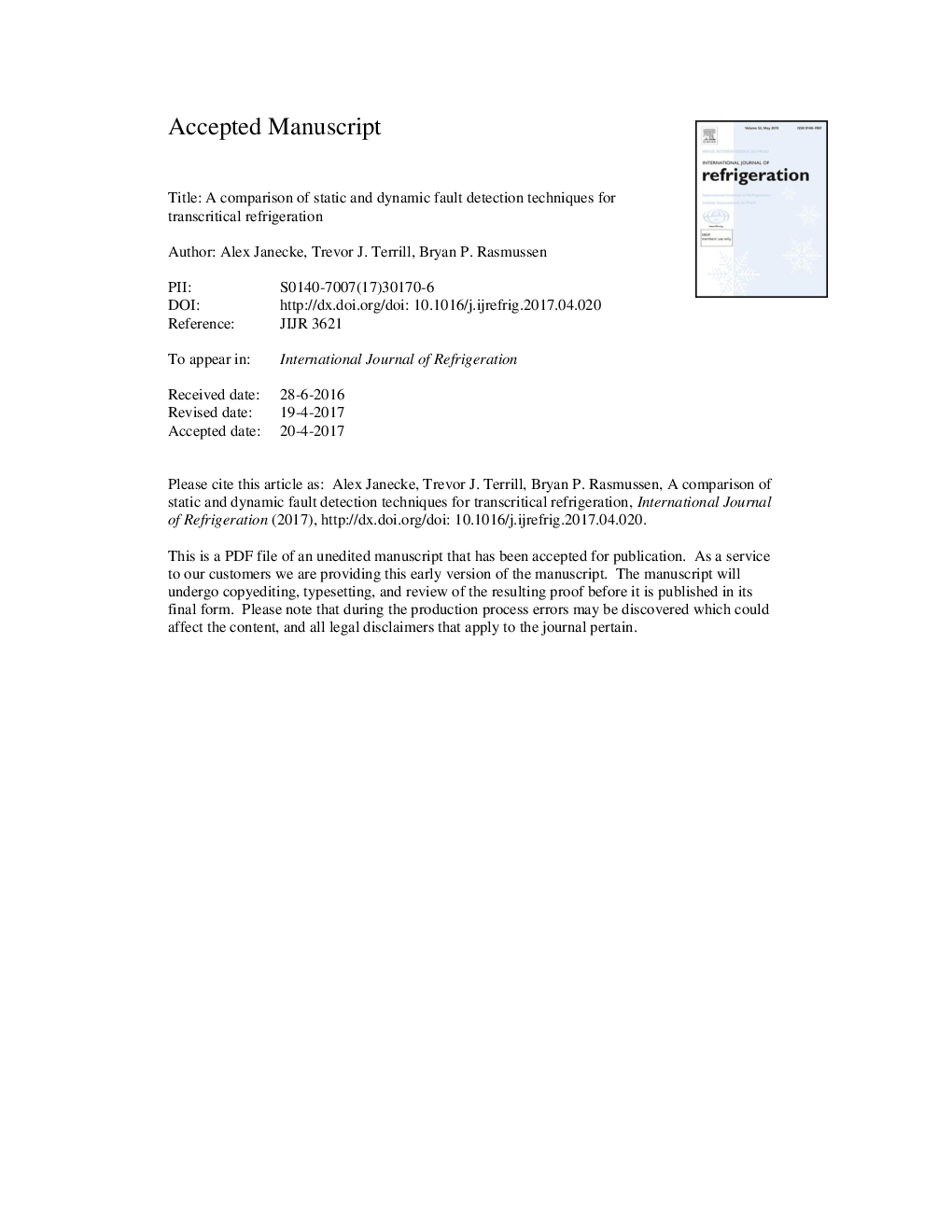| Article ID | Journal | Published Year | Pages | File Type |
|---|---|---|---|---|
| 5017071 | International Journal of Refrigeration | 2017 | 38 Pages |
Abstract
Repairing faults in heating, ventilation, air conditioning, and refrigeration (HVAC&R) systems can improve overall system energy efficiency and prevent leaked refrigerant, thereby generating substantial economic and environmental benefits. In this paper, static and dynamic fault detection and diagnosis (FDD) metrics are examined for both sub-critical and transcritical refrigeration cycles, with particular emphasis on transcritical cycles. Virtual sensors based on measurements from low-cost sensors are used to identify faulty behaviour. This paper demonstrates in simulation and experiment that current low-cost, static FDD techniques are capable of detecting multiple soft faults, even in the presence of secondary system faults. These results are shown for both subcritical and transcritical refrigeration cycles. The potential benefits of dynamic FDD over currently-available static methods are assessed through both simulation and experiment. This analysis illustrates that although there may be minor benefit in using dynamic FDD algorithms, there is limited increase in signal sensitivity with a large cost in increased complexity of the FDD algorithms.
Related Topics
Physical Sciences and Engineering
Engineering
Mechanical Engineering
Authors
Alex Janecke, Trevor J. Terrill, Bryan P. Rasmussen,
